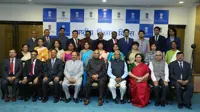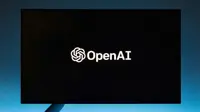Budget allocation of Rs2,46,727 cr for defence fails to impress
02 Mar 2016
Budget 2016-17 has made a Rs2,46,727 crore outlay for defence, which is Rs3,000 crore more than last year's budget provision and also more than last year's revised estimates of Rs2,24,636 crore, although finance minister Arun Jaitley failed to elaborate it during his budget speech.
Of this, a sum of Rs1,62,759 crore has been earmarked as 'revenue' expenses, while 'capital' account has received Rs86,340 crore. Revenue account has increased by nearly Rs20,000 crore against the revised estimates of Rs1,43,236 crore (against a BE of Rs1,52,139 crore), while capital account has witnessed a modest increase of Rs5,000 crore from last year's revised estimate of Rs81,400 crore (BE of Rs94,588 crore in FY 2015-16).
Non-plan outlays for 'defence pensions', which is not included in the defence budget, have accounted for nearly 65 per cent of total pension liabilities of Rs1,23,368 crore, while outlays for defence (miscellaneous) is Rs1,18,466 crore.
Other defence related expenses include Rs3,560 crore for border infrastructure and management , Rs 2,710 crore on 'network for defence services', etc.
However, a look at the pattern of budget provisioning reveals that capital expenditure of the defence sector has stagnated while revenue expenditure has steady increased with a sudden spurt due to the implementation of 7th pay commission as well as OROP.
MoD has approved more than Rs3,00,000 crore worth of projects. While the issue of technological and system obsolescence has put Indian arsenal in a difficult situation, defence minister Manohar Parrikar seems to emphasise more on indigenous projects, arguing that fighter and other big ticket items could save money through collaborative or domestic production.
While this year's budget appears inadequate for defence sector against perceived demands, Parrikar has stated in Parliament that the defence ministry has been able to reduce the import bill by Rs1,000 crore (from Rs35,000 crore in 2014-15 to Rs34,000 crore in 2015-16).
The government, it seems, is looking at a more rationalised method of allocating resources as part of a long and evolving process.

.webp)





























